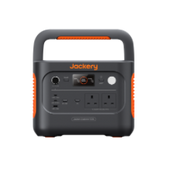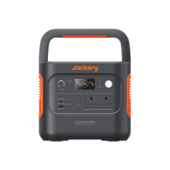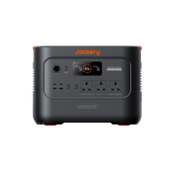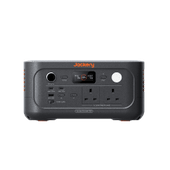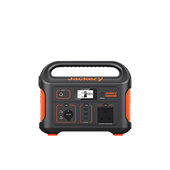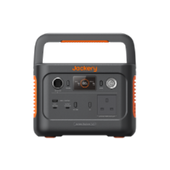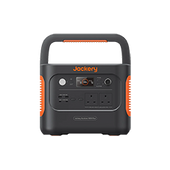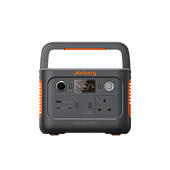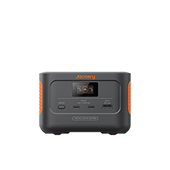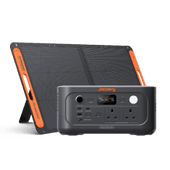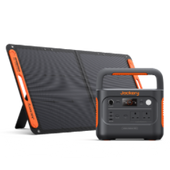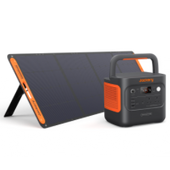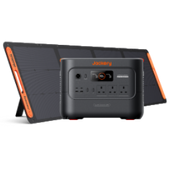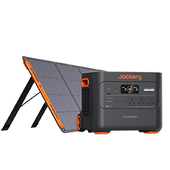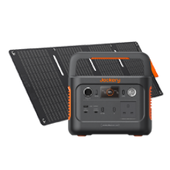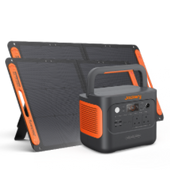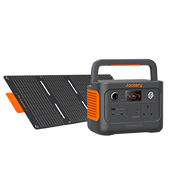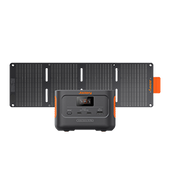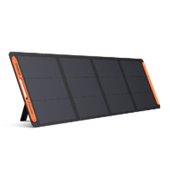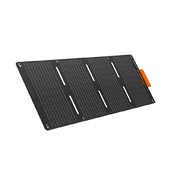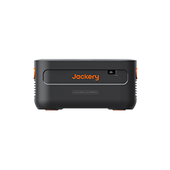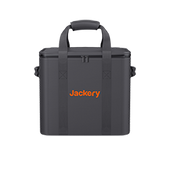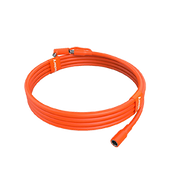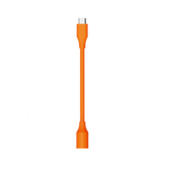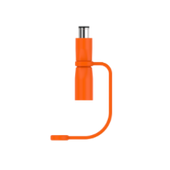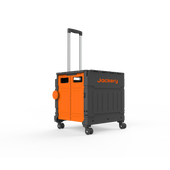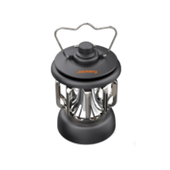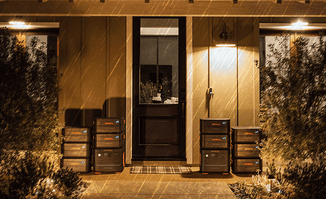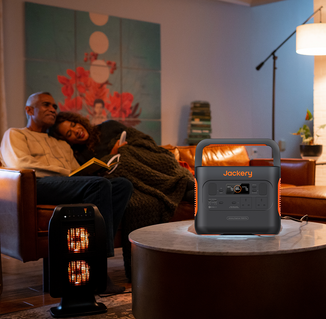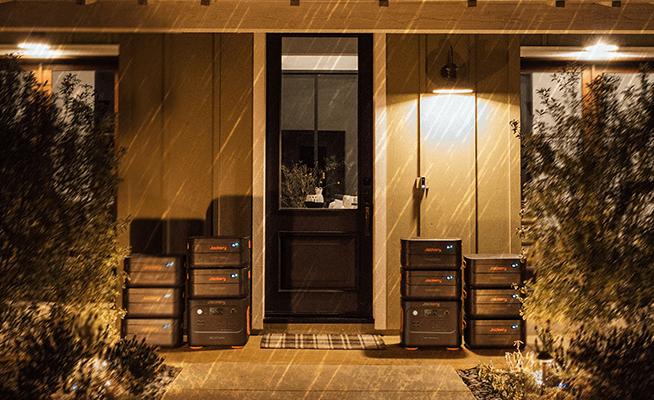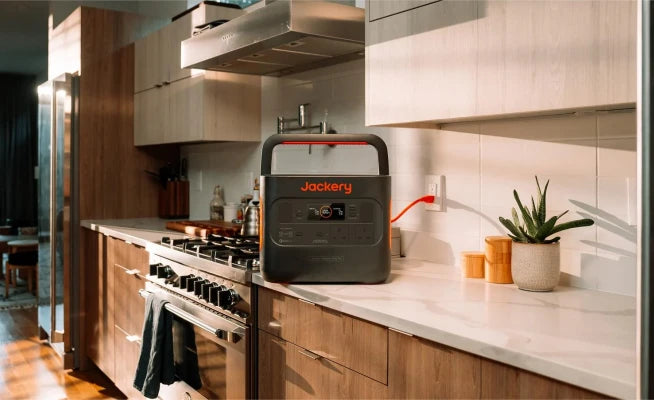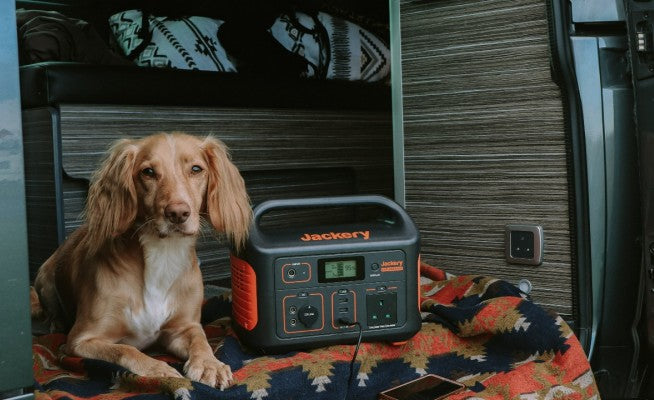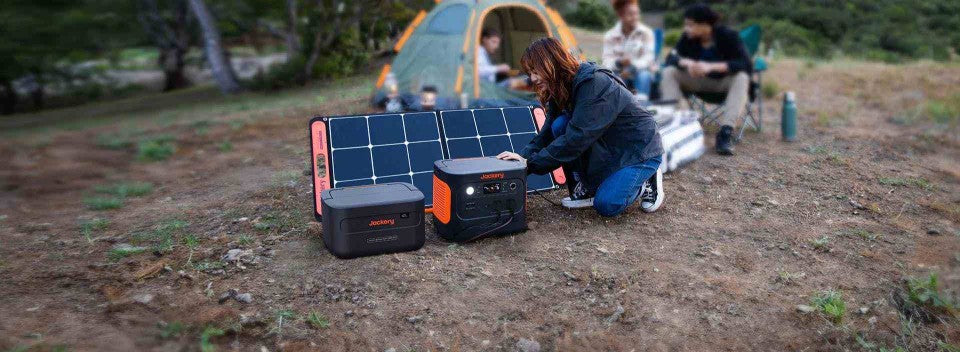For households needing to clean and dry large amounts of laundry, a tumble dryer can help people dry their laundry faster. However, if used frequently, a tumble dryer can consume a lot of energy, adding to your electricity bill. With electricity prices rising, it's more important than ever to understand the cost of running a tumble dryer.
This guide explores the running costs of a tumble dryer and provides more detailed information for UK households. Besides, we highly recommend Jackery Portable Power Station to charge electric blankets and more heating appliances in winter to save electric bills in your home.
|
Key Takeaways: |
|
- According to data from the UK Energy Regulator, the average power consumption of an ordinary tumble dryer per operation is about 3 to 5 kWh. - According to statistics from the UK home appliance repair industry, the average repair cost of a tumble dryer is between 50 and 100 pounds, depending on the severity of the fault and the parts that need to be replaced. - The electricity cost of this ventilated tumble dryer is about £1.33 per complete cycle, which is about £71 per year. - The condensing tumble dryer costs about £1.29 per full load or about £69 per year. - The heat pump tumble dryer will cost just £0.54 per wash, fully loaded, which works out to around £29 per year. - We highly recommend Jackery Explorer 2000 Plus and 1000 Plus for power tumble dryers. These devices use solar energy to save money on your electric bill. |
The Basics of Tumble Dryers
Due to their reliability, flexibility, and adaptability, tumble dryers are becoming increasingly popular in British households. The following is the basic knowledge about tumble dryers to help you better understand and use this device.
The working principle of drum dryers is mainly to use direct contact between hot air and materials for heat exchange. For example, clothes are placed in a rotatable drum. As the drum rotates, the clothes are constantly turned to ensure that each side can be evenly exposed to hot air, achieving rapid drying (evaporation and drying of water). How to operate tumble dryers?
The following are detailed steps about how to operate tumble dryers:
Step 1: Loading. Open the door, rotate the dehydrated materials evenly in the drum, and then close and lock the door.
Step 2: Time setting. Select the appropriate drying time and adjust the timing device according to the type of material.
Step 3: Start the equipment. Press the start button to start the tumble dryer.
Step 4: Monitoring and inspection. Frequently check the turning of the internal materials from the observation window.
Step 5: End the operation. After running for a specified time, the equipment will automatically stop. Open the door to check the drying effect and extend the time if necessary.
In short, the tumble dryer achieves continuous and efficient materials drying through the coordinated work of multiple components. Therefore, the tumble dryer occupies an essential position in modern life with its efficient and stable performance and provides a reliable solution for drying various materials.
How Much Does a Tumble Dryer Cost to Run?
Tumble dryers are indispensable household appliances in modern families, dramatically facilitating people's lives. However, for many British families, the running cost of tumble dryers is also an essential aspect of their concern.

Components of the Running Cost of a Tumble Dryer
The running cost of a tumble dryer usually includes electricity and maintenance costs.
Electricity Cost: Electricity is the main component of a tumble dryer's running cost. Because tumble dryers evaporate moisture from clothes by heating air, their power consumption is relatively high. According to data from the UK Energy Regulator, the average power consumption of an ordinary tumble dryer per operation is about 3 to 5 kWh.
Maintenance Cost: Maintenance is also essential to a tumble dryer's running cost. Maintenance mainly includes regular cleaning of filters, inspecting exhaust ducts, and replacing parts. According to statistics from the UK home appliance repair industry, the average repair cost of a tumble dryer is between 50 and 100 pounds, depending on the severity of the fault and the parts that need to be replaced.
How Much Does a Tumble Dryer Cost to Run?
Different types of tumble dryers have various running costs. However, the actual running cost is the electricity you use to operate your tumble dryer.
So, to answer the question of how much it costs to run a tumble dryer, you must first understand the essential electricity cost (24.86p per kWh / based on the price cap in 2025). Below is a breakdown of the running costs of ventilated, condensing and heat pump tumble dryers (based on electricity costs only).
Running Costs of Ventilated Tumble Dryers
The oldest type of tumble dryer is a ventilated one. It evaporates moisture from clothes by heating air and blowing it into the drum.
For example, a 9kg ventilated tumble dryer will use about 5.34 kWh of electricity for one complete cycle, which is about 283 kWh per year (if you use it once a week). Therefore, the electricity cost of this ventilated tumble dryer is about £1.33 per complete cycle, which is about £71 per year.
Running Costs of Condensing Tumble Dryers
A condensing tumble dryer evaporates the moisture from the clothes by heating the air. The water vapour is then condensed into water through a condensation system, which is collected in a water storage box or discharged directly.
For example, a 9kg condensing tumble dryer consumes 5.2 kWh when fully loaded, or about 275.6 kWh per year (if you use it once a week). Therefore, this condensing tumble dryer costs about £1.29 per full load or about £69 per year.
Running costs of Heat Pump Tumble Dryers
A heat pump tumble dryer uses heat pump technology to transfer heat to the clothes through compressed air, evaporate the moisture from the clothes, and condense the water vapour into water through a condensation system, which is collected in a water storage box or discharged directly.
For example, a 9kg tumble dryer consumes 2.16 kWh when fully loaded, which is 114.48 kWh per year (if you use it once a week). So, this heat pump tumble dryer will cost just £0.54 per wash, fully loaded, which works out to around £29 per year.
Which Tumble Dryer Is the Cheapest to Run?
Tumble dryers are popular in modern households for their convenience. However, there are significant differences in operating costs between different types of tumble dryers. Knowing which tumble dryer has the lowest operating costs can help consumers make more economical purchasing choices.

Heat Pump Tumble Dryers Have the Lowest Long-Term Operating Costs
Heat pump tumble dryers are one of the most efficient drying technologies on the market. Because heat pump tumble dryers rely primarily on heat transfer rather than direct electrical heating, they are very energy efficient.
Although heat pump tumble dryers have a relatively high initial purchase price, their long-term operating costs are significantly lower than others. For example, in some European energy efficiency tests, heat pump tumble dryers save about 30% to 50% on annual electricity bills compared to condenser dryers.
Here are the data on running costs of heat pump tumble dryers: (Data Source: which.co.uk)
• Average running cost per year: £51.39
• Maximum running cost per year: £77.21
• Minimum running cost per year: £33.77
Condensing Tumble Dryers Have Medium Running Costs
Condensing tumble dryers are often considered a more convenient alternative to vented dryers because they do not require a vent hose. However, condensing tumble dryers are much less energy efficient than heat pump dryers. They have a lower upfront purchase cost, but their running costs are medium, mainly because more electricity is required to heat the air.
Here are the data on the running costs of condensing tumble dryers:
• Average running cost per year: £129.56
• Maximum running cost per year: £173.63
• Minimum running cost per year: £101.96
The Running Costs of Ventilated Tumble Dryers Are Higher
Due to the lack of condensing devices, ventilated tumble dryers are the least energy efficient. They have the lowest initial purchase price, usually around a few hundred to a thousand yuan. However, their running costs are the highest. Not only do they consume a lot of energy, but they may also impact the indoor environment.
Here are the data on the running costs of ventilated tumble dryers: (data source: which.co.uk)
• Average running cost per year: £140.94
• Maximum running cost per year: £181.84
• Minimum running cost per year: £109.98
In summary, heat pumps and ventilated tumble dryers have the lowest running costs compared to condensing tumble dryers. A tumble dryer that costs less upfront to buy can become more expensive to run over time. Despite the higher initial investment, a heat pump tumble dryer can pay for itself in a few years through savings on electricity bills.
Factors Affecting Tumble Dryer Running Costs
As one of the indispensable household appliances in modern families, tumble dryers have greatly facilitated people's daily lives. However, in the process of using tumble dryers in British households, the efficiency and running costs of tumble dryers are affected by many factors. Here are a few of the main factors that affect the running costs of tumble dryers:
Energy Efficiency Rating
The type of tumble dryer and the model's energy efficiency rating affect running costs. All household appliances have energy efficiency ratings from A+++ to G, with A+++ being the most energy efficient and G being the least energy efficient.
Buying a tumble dryer with the highest rating of A+++ can save about £980 over its 13-year service life compared to a B-rated tumble dryer. (data source: Energy Conservation Foundation)
Material Characteristics
Different materials may require different drying temperatures and times and have different performance requirements for tumble dryers, affecting their running efficiency and running costs. Materials with high moisture content require longer drying times and more heat energy, increasing energy costs. For example, cotton clothes usually take longer to dry than synthetic fibre clothes.
Frequency of Use
Frequency of use directly affects the running cost of a tumble dryer. A tumble dryer's primary energy consumption is electricity and gas (some models). Therefore, the higher the frequency of use, the higher the energy cost. A British household that uses a tumble dryer daily will spend significantly more on electricity or gas than a household that uses it only a few times a week.
Load
The load of a tumble dryer also has an essential impact on running costs. For example, when the load is too small, the internal space of the tumble dryer is not fully utilized, resulting in energy waste. However, drying a whole load of clothes is usually more efficient than running multiple small cycles.
How Can I Reduce the Cost of Running a Tumble Dryer?
For most households, taking some simple but effective steps can significantly reduce the energy consumption of your tumble dryer and save money. Here are some practical tips to help more households reduce the running costs of tumble dryers.

Tip 1: Choose an Energy-Efficient Tumble Dryer
Pay attention to the energy efficiency rating of whichever type of tumble dryer you choose. According to the Energy Saving Trust, try to select an A rather than a B rating.
Tip 2: Make the Most of Your Tumble Dryer's Capacity
When you dry clothes, try to fill your tumble dryer as fully as possible, which will reduce the number of drying cycles. But also make sure there is enough space between clothes to circulate the hot air. According to Ideal Home, a 9kg ventilated tumble dryer uses 2.9 kWh when half-loaded but only 5.34 kWh when fully loaded.
Tip 3: Keep It Well-Ventilated
Ensure there is enough space around the tumble dryer to exhaust the hot air smoothly. If the tumble dryer is installed in an enclosed or poorly ventilated space, it may decrease drying efficiency and increase energy consumption. In addition, regularly cleaning dust and debris around the tumble dryer will also help keep it well-ventilated.
Tip 4: Use Dryer Balls
When using a tumble dryer, put dryer balls in it along with wet clothes. Dryer balls can help circulate hot air around the clothes, reducing drying time. Wool dryer balls can also help soften clothes and reduce wrinkles.
Tip 5: Clean the Tumble Dryer Regularly
Please regularly clean the tumble dryer's filter and internal ducts to ensure efficient operation. If your tumble dryer has vents, ensure the wall vents are also lint-free and the hose is not kinked.
Tip 6: Try Natural Drying
When weather permits, use natural drying methods, such as setting up a drying rack or clothesline outdoors. Especially in the sunny summer, natural drying is an economical and environmentally friendly choice. It not only saves energy but also helps extend the life of clothing.
Tip 7: Use a Generator or Power Station to Run
Investing in a generator to run appliances could be a wise choice, especially the solar generator, which turns sunlight into electricity. The portable power station can store the excess power for later use. Once the solar generator is fully recharged, you can run the tumble dryer and other appliances for several hours to a few days.
If you worry about the bad weather conditions in the UK, you can also recharge the power station at home with wall sockets, especially in off-peak times, which can save electric bills to some degree.
Taking Jackery Portable Power Station and Jackery Solar Generator as an example, if you choose to use the solar generator to power your home appliances, you can save about 50.76 pence per day. If you use it for 10 days, you can save 5 pounds.

Jackery Portable Power Stations Explained
A portable power station is necessary to run a dryer during a power outage because it provides a backup source of electricity that lets you keep using your dryer even when the main power goes out. This is especially helpful in emergencies or places where power goes out often.
We recommend Jackery Portable Power Stations to charge your heating appliances and save on your electric bills. Jackery offers portable power solutions ranging from 99W to 12 kWh, capable of powering up to 99% of appliances, including tumble dryers, heat pumps, hair dryers, etc.
Also, the Jackery Portable Power Stations are compact and easy to carry, so you can put them everywhere in your home. Compared to gas or other traditional generators, they are safer to use, and you can even use them while sleeping.
|
Dryers |
Working Hours |
|
|
Jackery Explorer 2000 Plus |
Jackery Explorer 1000 Plus |
|
|
Small Tumble Dryer (1000W) |
1.6-9.6H |
1-H |
|
Heat Pump Tumble Dryer (2100W) |
0.8-4.6H |
0.48-1.9H |
|
Condensing Tumble Dryer (5000W) |
1.92H |
0.8H |
|
Ventilated Tumble Dryer (5000W) |
1.92H |
0.8H |
|
Portable AC (700W) |
2.3-13.7H |
1.4-6.1H |
(*The working hours are only for reference; the actual working hours depend on your usage.)
Jackery Explorer 2000 Plus
Jackery Explorer 2000 Plus is more powerful and versatile than 1000 Plus. It is a solid portable power solution that delivers outstanding performance for outdoor activities and home backup, especially for camping. With its impressive capacity and powerful output, this device can support the operation of tumble dryers for even weeks.
The Jackery Explorer 2000 Plus enables the addition of extra battery packs, increasing the capacity from 2 kWh to an impressive 12 kWh, thereby significantly satisfying your power needs. This solar product has a remarkable output of 3000W, which can charge almost all essential appliances indoors or outdoors. If you only use one Explorer 2000 Plus battery pack, it can charge a 1000W tumble dryer for 1.6 hours.
The Explorer 2000 Plus stands out as a groundbreaking add-on battery pack that offers the convenience of recharging through solar panels, wall outlets or carports. This feature increases versatility, boosts charging efficiency, and shortens charging time.
ChargeShield is Jackery's advanced fast charge technology, featuring 62 protective mechanisms, 12 protective algorithms, and four types of physical safety protection. This technology uses a unique stepped variable-speed charging algorithm to enhance safety and extend battery pack lifespan by 50%.

Review from Our User:
I currently have three Jackery Solar Generators. Jackery Solar Generators are a reliable, well-made, and affordable option today. In addition, Jackery has the most outstanding service I've ever experienced. Look at my recent purchases: the E1000v2, E2000v2, and E2000 Plus. I have three 200w Solar Saga Solar Panels that will charge my units in case of an extended power outage.
Jackery Explorer 1000 Plus
Compared to the Explorer 2000 Plus, the Jackery Explorer 1000 Plus is more suitable for small tumble dryers and has an expandable capacity from 1264Wh to 5 kWh. It equips a durable LiFePO4 battery and a 2000W full-power pure sine wave inverter to supply sufficient energy for practically all essential devices. Notably, its capacity may be augmented to 5kWh by including up to three more battery packs.
The MPPT technology ensures 99% solar charging efficiency. A wall charge from 0% to 100% of the battery requires 100 minutes, whereas solar charging with four SolarSaga 200W solar panels necessitates 2 hours. With car charging capabilities, concerns over power disruptions will be alleviated.
In about 60 seconds, one may seamlessly connect solar panels to the power station, a procedure significantly more straightforward and user-friendly than traditional generators. Furthermore, it features a pass-through charging capability, allowing for device use while concurrently recharging via solar energy.

Review from Our User:
I purchased this product and an extra battery pack a few weeks back and am pleased. The quality of the materials and finish is outstanding. I used it in my motorhome while in the lakes, powering my air fryer and other small appliances, and it handled everything perfectly. It even powered the entire van to recharge the leisure battery for an hour.
Is It Worth Investing in a Tumble Dryer in the UK?
The following will analyze several key aspects to help more concerned families decide whether to invest in a tumble dryer.
Climate Conditions
The UK is known for its changeable weather and frequent rainfall, so drying clothes can be challenging. Especially in winter, low temperatures and humid air make it difficult for clothes to dry thoroughly.
Cost-Effectiveness
Although the initial purchase cost of a tumble dryer is relatively high, the investment may be worthwhile considering its long-term use value. In addition, the convenience provided by the tumble dryer saves the time and labour required to dry clothes. For busy modern families, this intangible time value is also worth considering.
Environmental Impact
Although tumble dryers have improved in convenience and energy savings, they still produce specific carbon emissions compared to natural drying. However, choosing an energy-efficient tumble dryer model and using it reasonably can reduce the environmental impact to a certain extent.
|
Pros and Cons of Using a Tumble Dryer in the UK |
|
|
Pros |
Cons |
|
Highly efficient clothes-drying Protection obligations Easy to operate Reduces bacterial growth |
High initial investment Large space required Safety risks Energy consumption |
In summary, it is worth investing in a tumble dryer in the UK, especially regarding climate conditions and cost-effectiveness. Although the initial cost is high, in the long run, the tumble dryer has significant advantages in saving time and energy and improving the convenience of life. Of course, the final decision needs to be made based on the actual situation and needs of the individual family.
FAQs
The following are the frequently asked questions about the running costs of tumble dryers in the UK:
1. Do tumble dryers use a lot of electricity?
Tumble dryers use a lot of electricity, which depends on their working principle and power. Usually, tumble dryers evaporate the moisture in clothes by heating air, and their power is generally between 1000 and 5000 watts. However, the specific power consumption of tumble dryers is also affected by clothing load and energy efficiency.
2. How much does it cost to run a dryer for 40 minutes?
In the UK, the cost of running a dryer for 40 minutes is mainly determined by its power and the electricity cost at that time. According to the latest data, the average electricity price in the UK is about 24.86 pence per kilowatt-hour (kWh). The power of ordinary household dryers is generally between 1 and 5kW. Therefore, the cost of running a dryer (1-5kW) for 40 minutes is about 16.58 pence to 82.87 pence.
3. How much does running a tumble dryer for 1 hour cost?
Based on the energy price cap of 24.86p per kWh in January 2025, a 3kW tumble dryer will cost about 74.58p to run for one hour. However, the cost per hour also depends on several factors, such as the tumble dryer's energy efficiency rating.
Final Thoughts
Drying clothes is usually a challenging job on cold and wet winter days. Not only that, but it is also annoying that damp clothes will breed bacteria after being hung out for a long time. The tumble dryer is the perfect solution for drying clothes because it is quick and easy to use. Although tumble dryers are becoming increasingly popular in modern households, their investment value in the UK must be considered from many angles.

